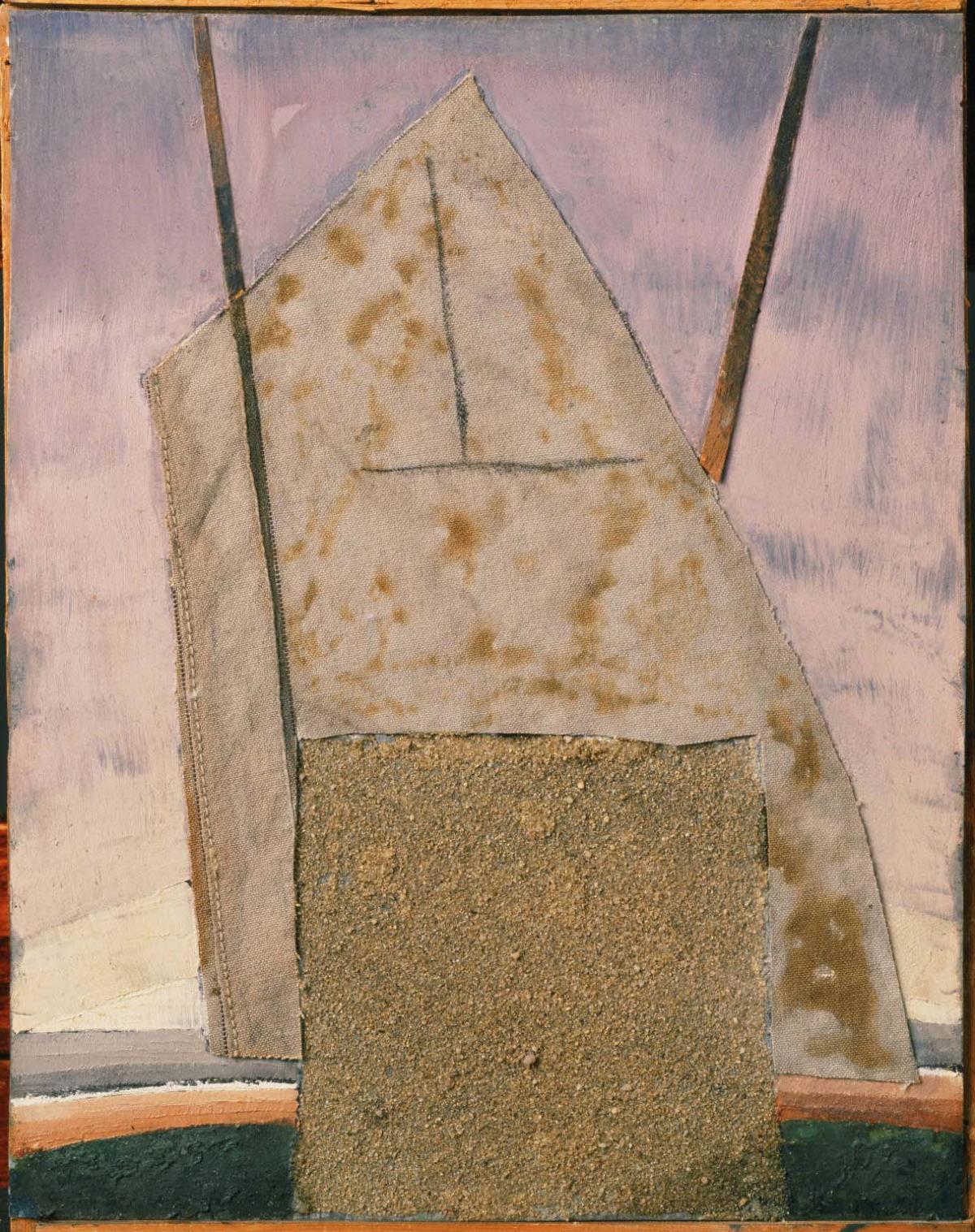Huntington Harbor I
Arthur G. Dove ( 1926 )

Arthur Dove painted Huntington Harbor I in 1926 while living on his sailboat. He occasionally made collages and assemblages between 1924 and 1933; twenty-five are known today. In Huntington Harbor I he used a variety of materials such as fabric, metal, and sandpaper. His clever, humorous technique reveals his awareness of the Dadaist collages being produced in Europe and his knowledge of American folk art, where artists often incorporated objects from their surroundings into their work and which was being revived in the 1920s. Dove’s collages and assemblages constitute a charming combination of these divergent influences.
In Huntington Harbor I, Dove also employed materials directly related to the subject. However, instead of arranging the objects to obtain an abstracted image, he retained the traditional format of a seascape by representing a lone boat on the water. A piece of canvas bearing a crossbar drawn in black designates the sail, vertical wooden strips represent masts, and sandpaper signifies the shore.
Phillips acquired Huntington Harbor I just two years after its completion. Phillips believed that it showed “extraordinary inspiration in the use of actual wood and cloth to add tactile value and rugged reality to a lyrical impression conveyed in a few exquisite colors.” He had come to believe that Dove was unique in his ability to manipulate natural materials to create works “far from the collage of the theoretical and sensation-seeking Parisians of the early Cubist period.”